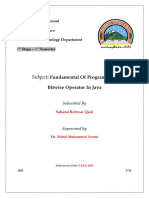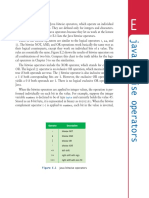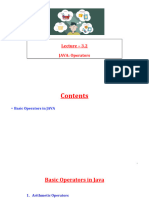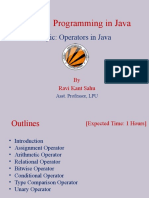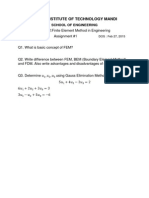0% found this document useful (0 votes)
5 views38 pagesLecture 3 Java
Uploaded by
Salim Rahaman Dipu 2111267642Copyright
© © All Rights Reserved
We take content rights seriously. If you suspect this is your content, claim it here.
Available Formats
Download as PPTX, PDF, TXT or read online on Scribd
0% found this document useful (0 votes)
5 views38 pagesLecture 3 Java
Uploaded by
Salim Rahaman Dipu 2111267642Copyright
© © All Rights Reserved
We take content rights seriously. If you suspect this is your content, claim it here.
Available Formats
Download as PPTX, PDF, TXT or read online on Scribd
/ 38



















